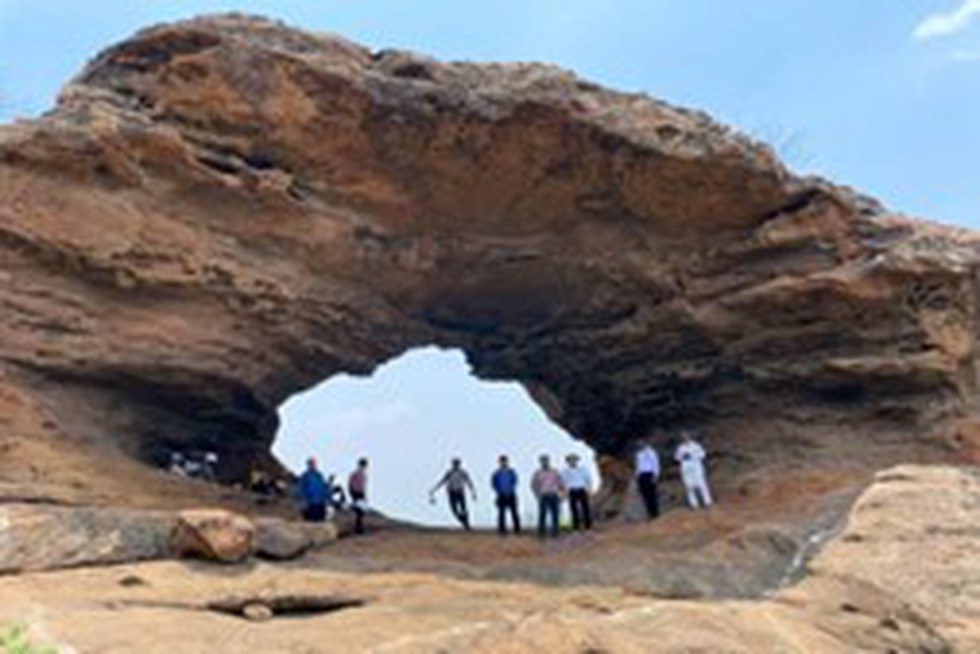Why in News:
- The state unit of the Geological Survey of India (GSI) has proposed to declare the ‘Natural Arch’ in the Kanika range of Sundargarh forest division, a Geo Heritage Site.
- If it is done, it will be the biggest natural arch of the country to have the Geo Heritage tag.
- Apart from the arch at Sundargarh, India has two others- one at Tirumala hills in Tirupati and another at Andaman and Nicobar. However, both of them are smaller compared to the one in Sundargarh.
About India’s Biggest Natural Arch:
- The Sundargarh natural arch, present in the ferruginous sandstone of the Upper Kamthi formation, dates back to about 184 to 160 million years in the lower to middle Jurassic age.
- It is an oval-shaped arch and has a length of 30 metres at the base and is 12 metres high.
- The alcove of the natural arch has a maximum height and width of 7 metres and 15 metres, respectively.
- The natural arch and its surrounding area are a storehouse of different primary sedimentary structures like planner and cross-bedding along with occasional current ripples signifying high energy fluvial environment during sedimentation.
- Formation: Formation of the natural arch could be due to fault activities and the nature of lithotype, which have enhanced the process of sub-aerial weathering over a long period.
What are Geo Heritage Sites (GHSs)?
- Geoheritage sites are sites of rare and unique geological, geo-morphological, mineralogical, petrological, and paleontological significance, including caves and natural rock sculptures of national and international interest.
- GSI declares geo-heritage sites/ national geological monuments for protection and maintenance.
- GSI or the respective State governments take necessary measures to protect these sites.
